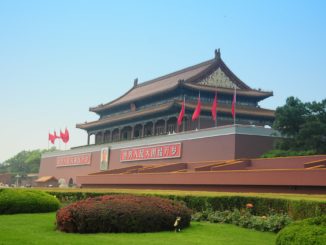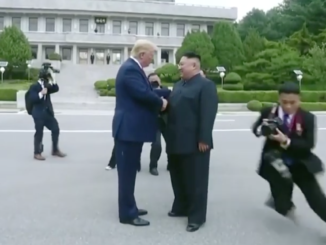South Korea is an Indo-Pacific middle power strategically situated between continental and maritime powers. This strategic position can allow Seoul to function as a ‘balancer’ in the region, a role traditionally played by its historic rival, Japan. However, after decades of US bilateral balancing between the two otherwise animus nations, the ‘alliance-first’ policy of South Korean President Yoon Suk-Yeol has finally allowed the Tokyo-Seoul rapprochement. Despite age-old animosities dating to the pre-WWII period, Japan and South Korea are now converging under the umbrella of mutual interests and common security dilemmas.
The shared strategic interests include avoiding choosing sides between the US and China in the increasing Sino-US strategic competition, undermining Russia’s expanding strategic outreach, countering North Korean nuclear aggression, and preventing Chinese assertiveness in the South China Sea. Both actors are aiming to preserve regional stability and status quo in the wake of the great power politics unfolding in the region.
The Tokyo-Seoul rapprochement has served as a catalyst in strengthening the trilateral relations between the US, Japan and South Korea. Extending diplomatic ties, the three nations held the Camp David summit in August 2023 which captured global attention. The summit was a diplomatic indication of shared strategic interests in the Indo-Pacific. However, Seoul’s increasing inclination towards Washington and Tokyo has raised concerns in Beijing. South Korea is no longer following the ‘Three Nos’ policy adopted by former President Moon Jae-in to placate Chinese aggression after the THAAD incident in 2017.
Interestingly, South Korea does have an underlying component to its alliance-first policy i.e. the principle of ‘mutual respect’ towards China. In light of the Camp David summit, China believes that South Korea is losing strategic autonomy. To ease Chinese concerns, Seoul hosted a trilateral meeting of senior diplomats from China, Japan and South Korea in September 2023. The core focus of the meeting was on mutual interests including preventing conflict and ensuring a stable regional security environment. The officials also agreed to conduct a leaders’ level summit later this year, similar to the trilateral summits with the US.
However, the trilateral meeting was largely devoid of any discussion on countering North Korean nuclear aggression or the chip war between the US and China. To elucidate the chip war, Washington has banned the export of semiconductors to China to prevent its technological advancements in the military domain. Tokyo, a core US ally, has partaken in the war on Washington’s side. Now, China has reciprocated by imposing a ban on Micron Technology, a US-based chip giant – a move which opened trade avenues for South Korean chipmakers, Samsung and SK Hynix.
South Korea stands on the horn of a dilemma: whether to uphold its alliance with the US and Japan or reap economic benefits from the opportunity at hand, now that US chip exporters are out of Chinese markets.
To protect its reconciliation with Japan and prevent entrapment in the great power rivalry, South Korea is pursuing triangular diplomacy through minilateralism. Through a security alliance with the US and Japan on one hand and a growing strategic partnership with China on the other, South Korea is looking to protect its national interests. Nevertheless, being a part of two different trilateral settings does not guarantee South Korea absolute security. Continuing to depend on US policy of extended deterrence or China’s strategic partnership might just render South Korea the pawn in the great powers’ chessboard.
Stimulated largely by Japan’s adoption of a proactive defence and security posture, South Korea has leaned towards greater self-reliance. While Japan already aims to increase its defence budget to 2% of its GDP as per NATO’s standards and is fast on its way to becoming the third biggest military power by 2027, South Korea is also redefining its security calculus. Under President Yoon’s Defence Innovation 4.0, South Korea is rapidly modernising its defence systems and expanding domestic weapons production. South Korea is also set to increase its defence budget to $45 billion in 2024 for rapid development of its three-axis system – a pre-emptive plan to undermine North Korea’s nuclear and conventional strikes.
According to South Korea’s 2022 Defence White Paper, it is aiming to build counterforce capabilities and develop minimal credible deterrence, not only to deter the North Korean threat but to “establish a robust defence posture against omnidirectional security threats”.
Despite South Korea’s shift towards increasing self-reliance, its foreign policy approach to balancing threats emanating from the Sino-US competition exhibits strategic ambiguity. Like the Indo-Pacific traditional middle powers – Japan, India and Australia – South Korea needs to adopt omnidirectional hedging to diversify its security, economic and diplomatic relations with other regional and extra-regional powers.
While the Seoul-Tokyo rapprochement is an evident attempt at omnidirectional hedging, South Korea should seek to become a part of the broader middle power network in the Indo-Pacific. This will allow it to build long-term relations with its newfound ally, Japan, and carefully tread its relations between its two historic partners, the US and China. This way, South Korea can uphold the status quo, enjoy shared benefits on all sides, and avoid getting embroiled in the great power contestation.
![]()




Be the first to comment